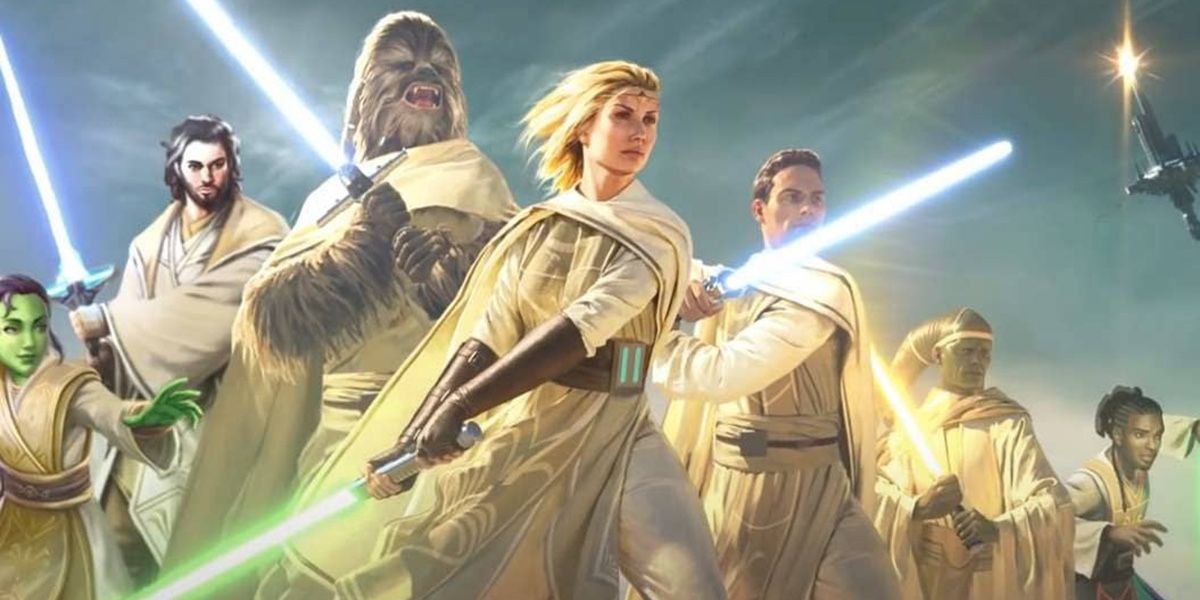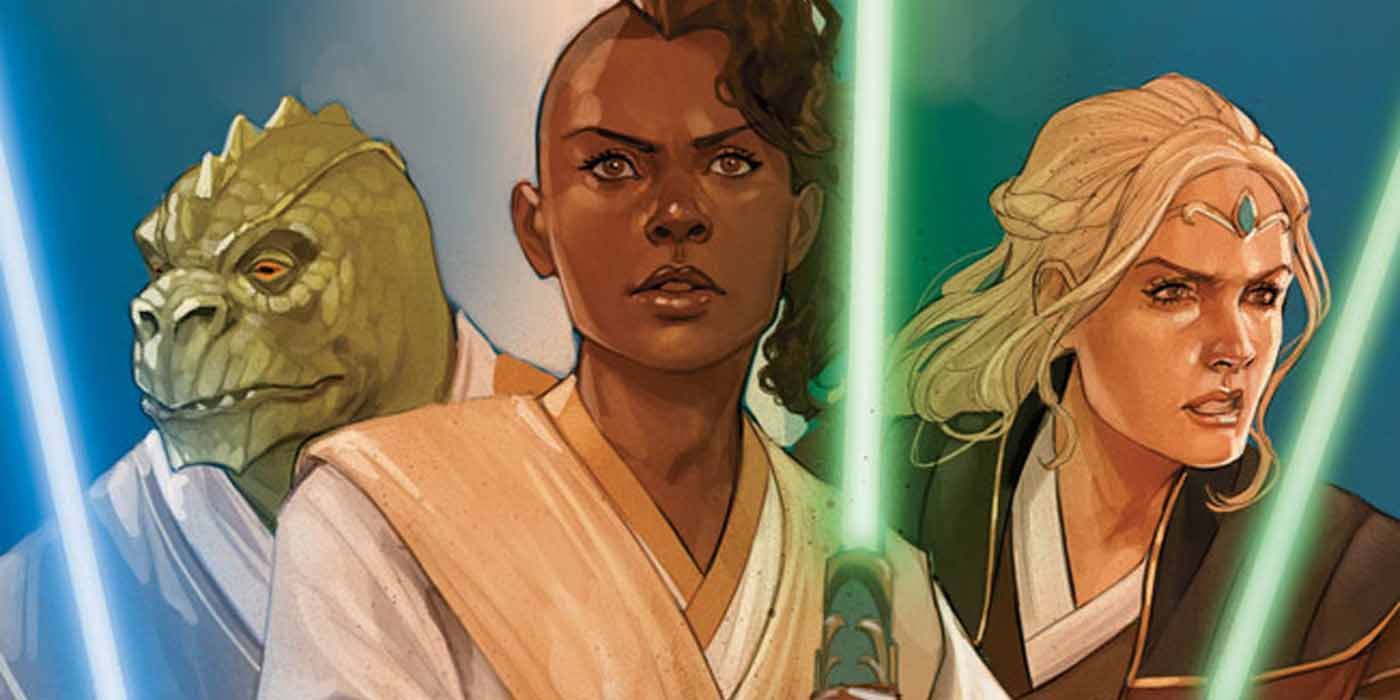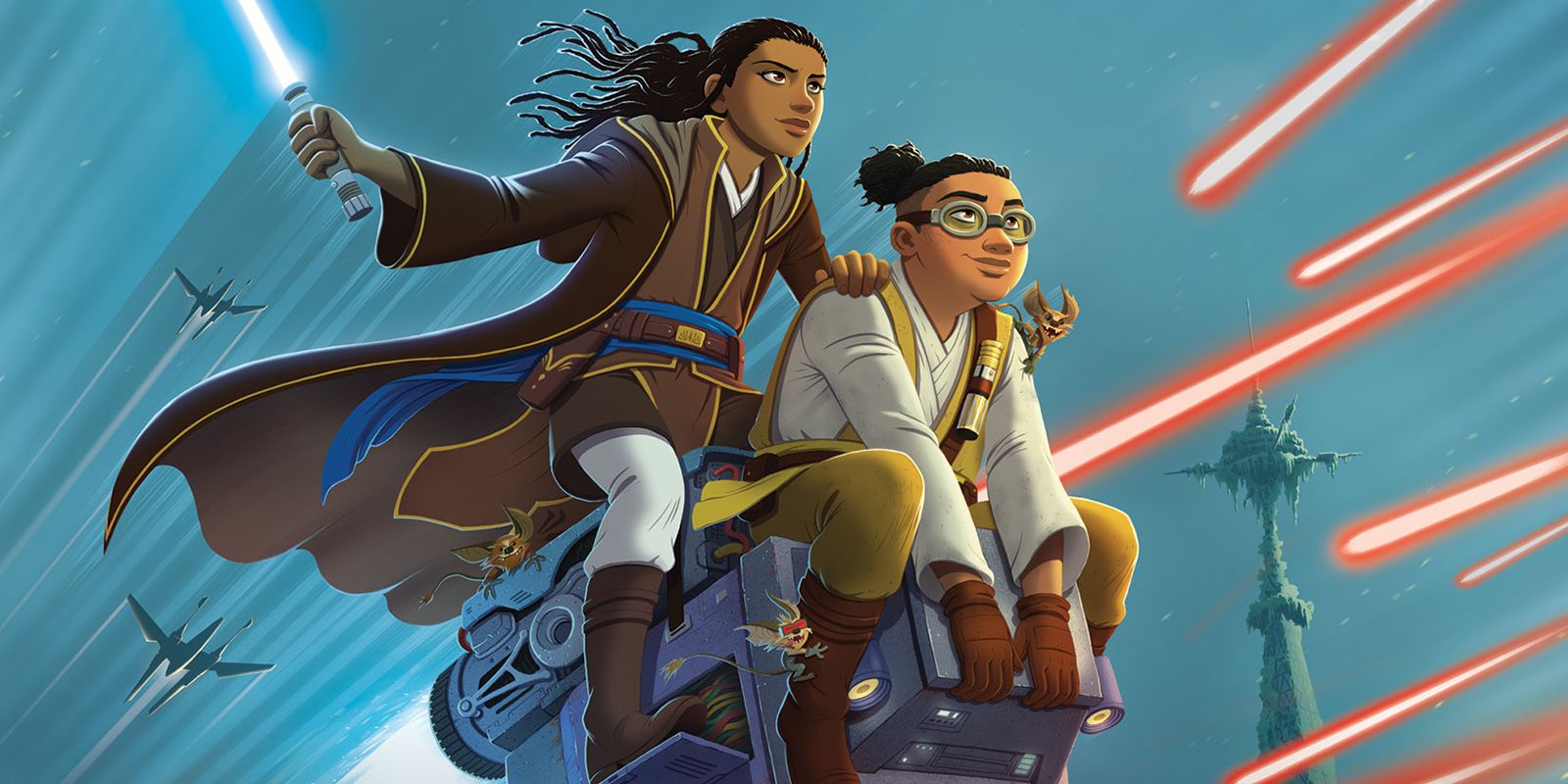For the past few years, Star Wars hype has predominantly revolved around The Mandalorian's success. Eschewing the grand, status quo-changing battles of past movie trilogies in favor of a Lone Wolf and Cub-inspired relationship. Jon Favreau and Dave Filoni's space western captivated critics and viewers alike, successfully introducing fun new characters while adapting fan-favorites from Filoni's acclaimed animated series. Yet over the past year, another Star Wars entry achieved has similar acclaim with the scope to match: Star Wars: The High Republic. This collection of interlocking book storylines have not only created one of the franchise's strongest projects to date, but in many respects they've surpassed the movies and The Mandalorian's limitations, utilizing bold world-building elements to make the Star Wars universe feel more complex rather than be constrained by its past.
Taking place 200 years before The Phantom Menace, The High Republic treats viewers to an earlier, more prosperous era of the Jedi and Galactic Republic's political and cultural rule. Peace, however, is upended by the Great Hyperspace Disaster: a catastrophic incident where the debris of a starship destroyed in hyperspace is flung throughout the universe, spontaneously destroying nearby space stations and moons. While the Jedi Knights successfully prevent one massive "Emergence" from crashing into a larger, populated world, this chaos soon gives way to new threats that these the Jedi's authority. These include both the Drengir -- Little Shop of Horrors-inspired plant monsters infesting countless planets -- and the Nihil, a vicious band of marauders fundamentally opposed to the Jedi and Chancellor Lina Soh's Outer Rim expansion.
What's most unique about The High Republic is the way it's told. Both the prequel and sequel trilogies could only convey so much about their generational wars into a two-plus hour runtime, while The Mandalorian's story is primarily limited to Din Djarin and Grogu's relationship. The High Republic, meanwhile, is a multimedia narrative akin to classic Expanded Universe books, spanning adult novels, YA fiction, children's books and comics produced by Marvel and IDW Publishing, each occupying the same "Phase" of a grander arc between the Jedi, Drengir and Nihil. Because of this structure, reoccurring characters may cross over into other series and acknowledge familiar locations and incidents like the Starlight Beacon station or Republic Fair attack, but in a way where every reader, regardless of age, has an entry point into this ongoing journey. Aiding The High Republic's success is a collection of talented writers, artists and editors bringing each story to life, including Star Wars veterans like Charles Soule, Cavan Scott, Claudia Gray, Phil Noto, Ario Anindito, Harvey Tolibao, Heather Antos and Daniel José Older.
Even more impressive are the heroes. The High Republic offers a plethora of new Jedi Knights, Padawans and even non-Jedi characters who provide us with a wider understanding of this era in which the Jedi Order were truly viewed as "guardians of peace and justice." From the long-term friendship between Avar Kriss, Elzar Mann and Stellan Gios to Loden Greatstorm and Bell Zettifar's master/pupil dynamic, each characterization feels engaging without being a carbon copy of past trilogy characters. Instead, they live up the Jedi's "Knight" status, valiantly protecting innocent species from tyrants using their lightsabers -- some with crossguards more Arthurian in design than Kylo Ren's -- and addressing each battle with the new mantra "For light and life."
A few classic Star Wars faces do appear here and there: a younger Yoda of course, as well as prequel characters like Yarael Poof and Oppo Rancisis and the sequel trilogy's Maz Kanata. But for the most part, The High Republic embraces the oddities and complexities of its original faces. A Wookie Padawan named Burryaga. The reptilian Trandoshan Jedi Master Sskeer. An ex-Padawan mercenary named Ty Yorrick. A Jedi medic who ironically insists he be referred to as "Buckets of Blood." More than just fight villains, everyone's journey spark new conversations about pre-conceived Jedi philosophy, from the way characters view the costs of forming attachments to their physical perceptions of the Force (i.e. Avar sees the Force as a song, Elzar a vast ocean). Unlike The Mandalorian, which, for all its strengths, relies heavily on established Star Wars iconography and characters, The High Republic works even without them.
The same goes for the Nihil. With the Sith still regarded as extinct during this era, the Nihil manage to be worthy anti-Jedi foes without feeling like Sith stand-ins. Ruthless and unyielding, the Nihil commit widespread carnage wherever they go, yet obey their own perverse hierarchy: three Tempest factions, each under the command of a Runner who answer to the mysterious Eye of the Nihil, Marchion Ro. In both books and comics, the Nihil consistently live up to their reputation, laying out devious traps for the Republic, unpredictably traveling through hyperspace, and working in service of Ro's mysterious agenda. A lack of Force-sensitivity never diminishes the Nihil's threat. If anything, it's the scope of their zealous avarice that make them so terrifying: a grounded adversary willing to destroy anything and everyone regardless of their status, especially the morally righteous Jedi Knights.
That The High Republic has crafted such an expansive corner of the Star Wars universe before it has even been adapted is a testament to the writing and characters. Such adaptations are currently underway, both in the upcoming TV series The Acolyte and newly-announced video game Star Wars Eclipse. Even if this is the first of three phases -- Phase 1 will conclude in January with Claudia Gray's The Fallen Star novel-- The High Republic leaves the door open for so many more adventures. That's ultimately its biggest advantage over other recent Star Wars IP. Both the films and The Mandalorian have timeline limitations. The High Republic's possibilities, by nature of its literary structure, are unlimited.
Star Wars: The High Republic: The Fallen Star is available to buy in bookstores Jan. 4, 2022.



